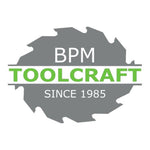
Hand Tools - A very good place to start
When chatting to fellow woodworkers and people new to our craft, the conversation often steers in the direction of the latest and greatest, whizz bang tool or accessory that promises to turn us into great woodworkers overnight.
Thinking that a specific tool or machine will change your life is not entirely without merit. A simple example would be buying a decent bandsaw with a good range of quality blades and learning to setup it up and use it well, this will change your life! Buy a really good blade or two and a laser cut mitre gauge for your table saw, this will dramatically change your life, and buying a couple of really good hand planes and chisels, sharpening them properly and your woodworking life will take on a whole new dimension!



The same goes for the tools that we don't really think about, such a rulers. The fact is that not all rulers are equal, or accurate for that matter. Buy decent rulers, ones that are well made with minimal parallax errors and they will be with you for life. This also goes for mitre squares, dovetail guides and saddles, try squares, sliding bevels and combination squares.


When it comes to tools such as carving mallets, cabinetmakers mallets, journeyman's mallets and some clamps, why not make your own? If you have a woodturning lathe or access to one, mallets can be made easily at little or no cost, and you can be proud of the tool you made.


Handscrew clamps are wonderfully versatile tools, and it is great to have at least four of each in three or four sizes, why not use up your offcuts and make your own, we have the kits in stock!


In woodworking, it all starts with pencils, rulers, chalk, squares, marking knives, marking gauges, try squares and mitre squares. To put it another way, it all starts with hand tools. I suggest that you choose your hand tools wisely, they will serve you for your woodworking life, they are simple and efficient tools that have stood the test of time and they will give you years of enjoyment.


Even if you mill your timber on a jointer and thicknesser, cut to width on your table saw and cut to length on your mitre saw, you still need the necessary hand tools to measure, lay out, mark and scribe!


Here are my Ten Starter Tips for Hand Tools.
- Start with the best you can afford.
- Remember, these are fine instruments, treat them well and they will serve you well.
- Start with a #62 hand plane from a reputable manufacturer, one where a variety of blades are available.
- Start with quality chisels that fit your hand comfortably. Sets are not always ideal, get only what you really need now.
- Start with the best sharpening jig you can afford.
- Start with decent whetstones for sharpening in 1000, 3000 and 6000 Grit.
- Start with mallets that are easy to wield and are comfortable for long usage.
- Start with two 0.5mm clutch type pencils, 1 with HB lead and one with 2H lead.
- Start with a really accurate try square, double square, bevel gauge and laser cut T-ruler.
- Learn to use you hand tools carefully, with confidence and efficiently.
Here are My Ten Personal General Woodworking Tips:
- Always use genuine 3M Painter's Tape when laying out joints, it makes things much easier to see. (Especially when working with dark woods)
- Always keep a bottle of Jojoba or Camellia Oil handy, and wipe your tools properly with a little of it after every work session.
- Always set some time aside for sharpening and honing.
- Periodically, make sure that your workbench is really flat.
- When finished for the day, clean up and pack away, it's much nicer to start on a clean bench tomorrow.
- Don't try to fix impossible mistakes.
- Plan your project well.
- Make a cutting list.
- When dealing with curves, always make templates from 3mm MDF (Not Hardboard)
- Never let anyone tell you that you can't do it...
Until next time, let's make shavings, not dust.

Comments
Leave a comment